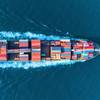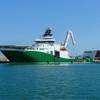Report: Shipping, Aviation 2030 Climate Goals Too Weak
The international shipping and aviation sectors' 2030 climate targets are too weak and their emissions are on course to reach dangerous levels despite the impact of the COVID-19 pandemic, research showed on Wednesday.
To limit the temperature rise to safe levels, global carbon dioxide (CO2) emissions need to be reduced to net-zero by 2050. Shipping and aviation accounted for around 5% of all emissions before the COVID-19 outbreak and are expected to contribute 40% by 2050.
Climate Action Tracker, a collaboration between German-based Climate Analytics and the New Climate Institute, measures government action against a globally agreed aim to limit warming to safe levels.
Climate Action Tracker said trade and maritime passenger transport have slowed as lockdowns to spread the novel coronavirus limited movement. The sector's emissions could drop by 18-35% this year from 2019, it said, but by 2030, shipping emissions' growth could return to pre-COVID levels.
The report said the shipping industry was already likely to exceed its own 2030 climate target and its emissions are expected to soar above its 2050 goal.
The study also said ships powered by liquefied natural gas would not support a transition to zero CO2 emissions and could increase the sector's climate impact when the full life-cycle, including super-cooling the gas for shipment, is taken into account.
"There is tremendous potential for the international shipping industry to decarbonize completely and reach zero emissions by 2050, yet there is very little sign of this sector is moving anywhere near fast enough," Bill Hare at Climate Analytics said.
As air travel has shrunk because of pandemic lockdowns, aviation CO2 emissions are likely to be 45%-60% lower this year than in 2019, the report said.
However, emissions are forecast to double or even triple over the 2015-2050 period and this year's decline does not alter that trajectory.
(Reporting by Nina Chestney; editing by Barbara Lewis)













